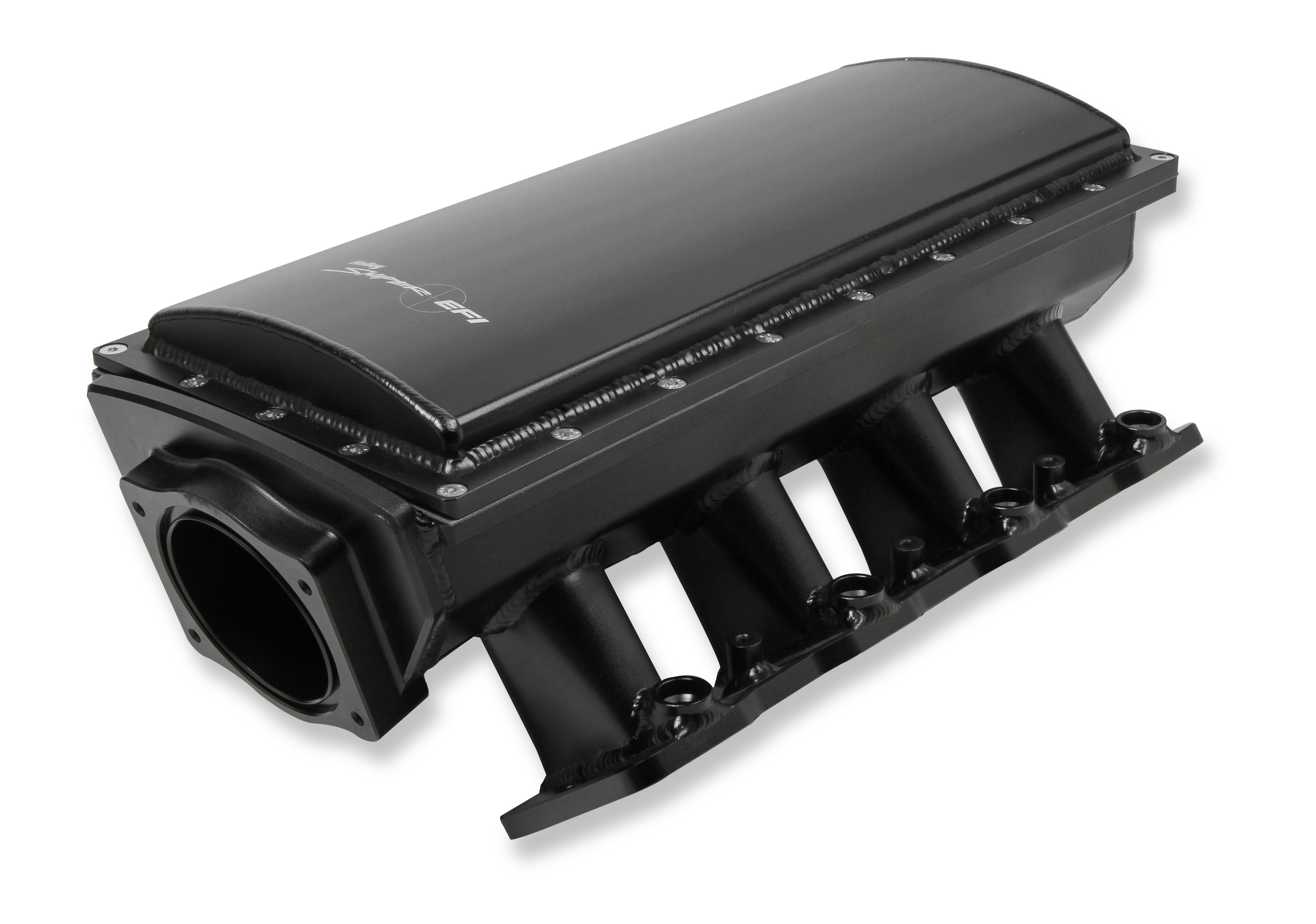

The company is working to develop a complete swap kit for ’11-’16 Mustang GT owners that want to use this manifold. UPR Products was one of the first to get its hands on Holley’s first intake manifold for the Coyote. The starting point is a lightly modified ’15 Mustang GT. Our initial testing found that the power curve is very similar to that of the Boss intake.” “The power band is lengthened on the top end by 200 to 300 rpm. “Compared to a stock Coyote manifold the runners are slightly shorter with a slightly different taper than the OEM manifold, which helps improve higher RPM velocity,” Coles added. Those runners measure 2.4 x 1.5 inches, and are 7.6 inches in length.

The throttle body feeds a large plenum which supplies air to individual runners for each cylinder. “While drawing some inspiration from the mid-rise for the GM LS engines, these intakes were designed with functionality and aesthetics in mind while attempting to mimic OEM power bands without any losses,” Coles said. Speaking of massive amounts of air, check out all of the space in this intake manifold. “The design will accept most aftermarket throttle bodies for the Coyote, and Holley is currently developing a spacer to allow the intake to accept the stock throttle body as well.” “The new Holley intake is intended for naturally aspirated vehicles, although we have more than a dozen intakes out in the field for long-term testing,” Coles added. Specializing in high-performance induction solutions for more than 100 years, Holley shifted in the last decade from focusing on carburetors and those associated parts to more of a total performance company, including solutions for EFI. With that said, it makes sense that one of the first out of the gate with a new aftermarket manifold for enthusiasts is Holley Performance. Aside from a custom-built manifold, however, no one has taken on producing a better manifold for the Coyote outside of the Blue Oval. However, something we haven’t seen the aftermarket do much with on the Coyote is the intake manifold, although there have been a handful of choices from Ford, including the Boss and Cobra Jet/Ford Performance manifolds, and now the GT350 piece. Performance parts selection runs the gamut with all the usual players involved. Much like the 5.0 craze of the 1990s, Mustang fans can’t get enough of this engine. – Anthony Coles, Holley Performance The aftermarket has seen a boom with the Coyote as well. While drawing some inspiration from the mid-rise for the GM LS engines, these intakes were designed with functionality and aesthetics in mind while attempting to mimic OEM power bands without any losses.


 0 kommentar(er)
0 kommentar(er)
